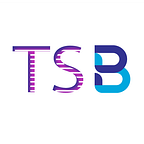Blockchain applications in Poultry Industry (Part 29)
Welcome to the 29th part of the 100 part series on Blockchain.
Egg consumption is increasing day by day because it is inexpensive, easy to process, and a rich source of protein. Consequently, growth in poultry farming can also be observed because of the increased demand for eggs and chicken. But still, the quality of eggs and chicken remains a concern for the consumers. For better quality of eggs and chicken, better poultry production needs to be done. Additionally, outbreaks of contamination linked to eggs and poultry are a major challenge for the food industry. In April 2018, 207 million eggs from a North Carolina farm possibly contaminated with bacteria were recalled.
The consumers, before buying eggs and chicken, have a few questions in their mind like:
· Where and how were the chickens raised?
· What were they fed?
· Antibiotics and vaccinations that the chicken received during its life
· Whether it was raised free-range, cage-free, or in a cage and even the location where the livestock was harvested?
· Where was the chicken processed?
· And most important, is it fit for consumption?
Blockchain-The solution
All the stakeholders involved in the poultry industry will be registered on the Blockchain, and they will be required to record the relevant information on the shared, immutable ledger. Since storing the entire supply chain data on Blockchain is very costly; thus, distributed off-chain file storage IPFS is used. Precisely, entire supply chain transactions data will be stored on the off-chain file storage IPFS and the hash of the uploaded data, along with its address, will be stored on the smart contract of Blockchain. Anyone knowing the hash of the file can retrieve the information from IPFS.
Producers
The supply chain starts with the producers. The producer will have to provide information like the location of the livestock farm, date of hatching of eggs, antibiotics given to chicken, other details like whether they were raised free-range or cage-free, and departure date of chicken to the slaughterhouse.
The poultry should be appropriately managed for better production of poultry items, and therefore producers have to take care towards:
· Maintaining proper body weight of poultry and taking care of its feed and water consumption.
· The stress levels in the poultry should be assessed through body temperatures that are captured through IoT devices.
· From a disease management outlook, it is necessary to spot diseased poultry and separate it before the entire flock is affected because the disease can spread to humans too after consuming the affected poultry products.
The producers will also be required to provide certificates for the proof of managing poultry properly.
Processors
Next comes the processors who process the chicken and eggs. The information they will be required to provide is slaughter location, packaging, labeling location, storage conditions of the processed poultry, product expiry date, and dispatch date of the processed item on the Blockchain. At this stage, the product will be given a unique identification number QR code. Since chicken is a perishable product that needs to be kept at a low temperature during its transportation in order to prevent it from getting spoiled. IoT sensors will be installed on the packets that will sense the temperature of the products and will record it on the Blockchain.
Retailers
Retailers receive these products from distributors and sell these to the end consumers. The retailer will be required to record the received items, inventory details, storage details, and sales information on the Blockchain.
Customers
The consumer is the final link in the food supply chain who consumes this food. Therefore should have full rights to know detailed information about it. Through Blockchain, a consumer can know all the information about the poultry, like its health, living conditions, and processing details before buying and bringing it home. The consumer can simply scan the unique ID through his smartphone and get all the information he always wanted to know.
The information about the provenance of the products will also be available on the Blockchain. Even the transportation conditions of the poultry will also be available on the Blockchain. With all this information at his disposal, he can easily validate if the product he is buying is fit for consumption or not.
If you liked this article and want to know more about Blockchain, NFTs, Metaverse, and their applications, click the below link.
Happy learning!
Other related articles
Happy Blockchain Learning!
